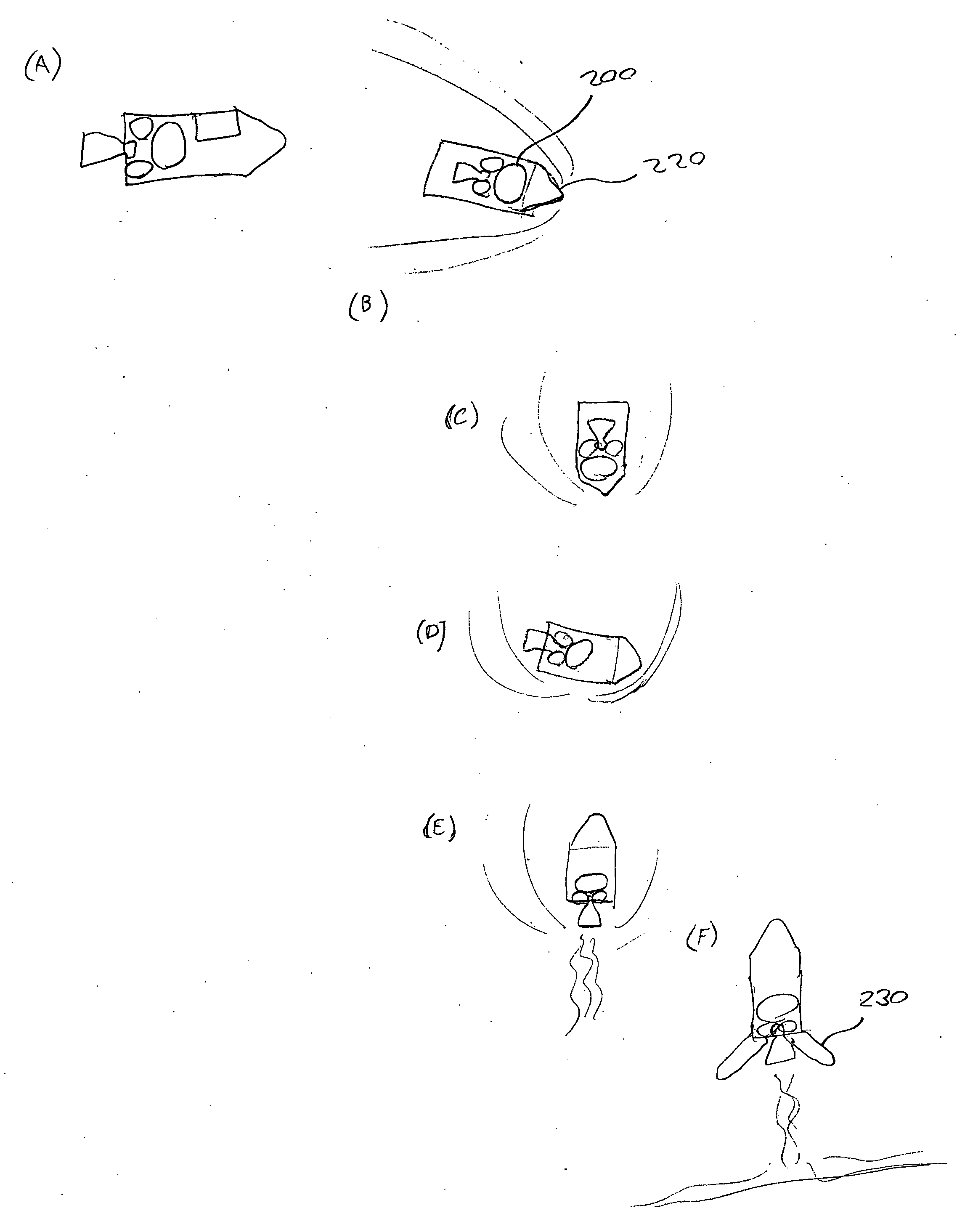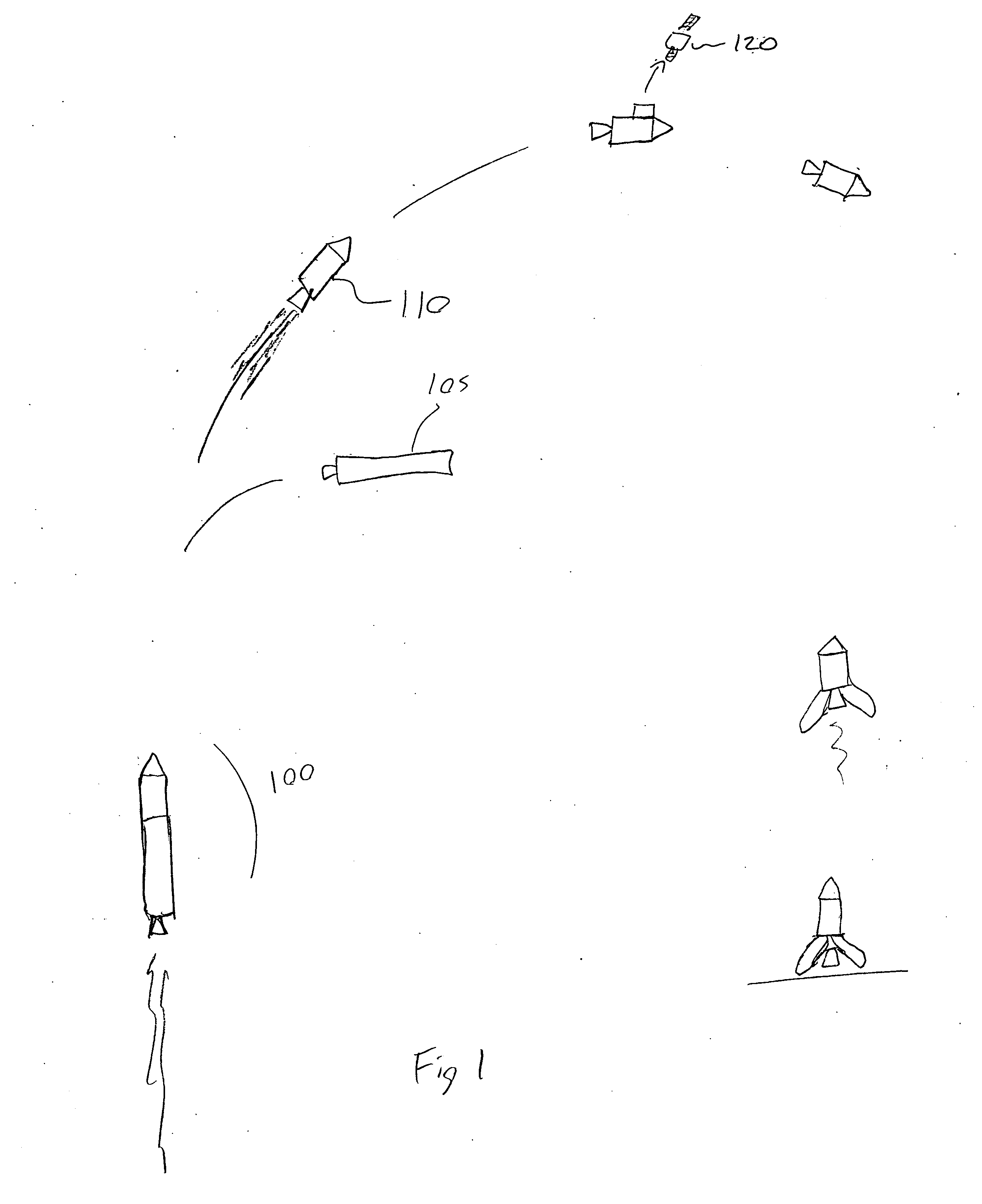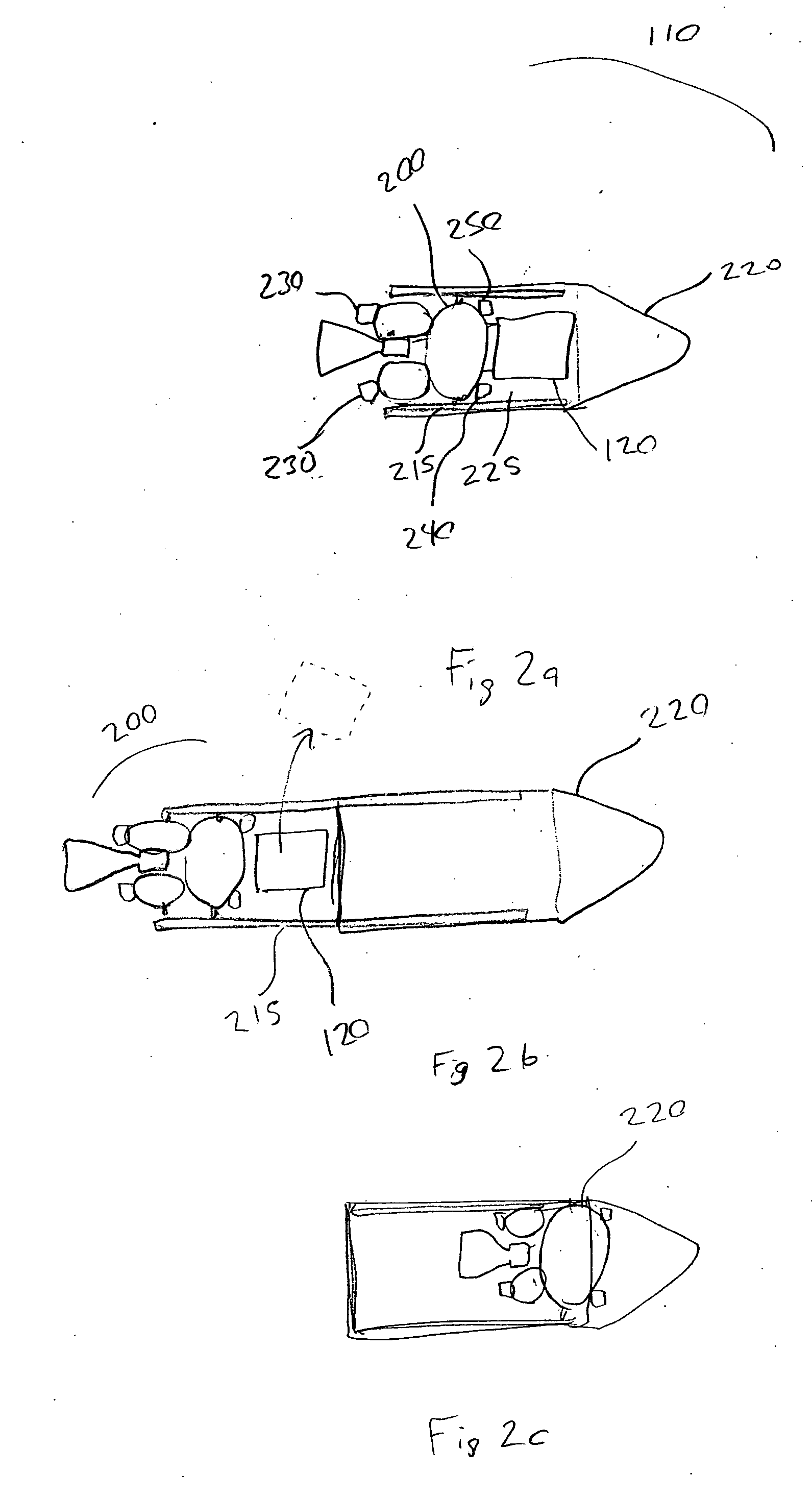Reusable upper stage
a technology of upper stage and reusable upper stage, which is applied in the field of aerospace vehicles and spacecraft, can solve the problems of high cost of launch vehicle systems, inability to fully re-use earth-to-orbit launch vehicles, and inability to fly fully reusable earth-to-orbit launch vehicles, etc., and achieve the effect of re-use and minimal tim
- Summary
- Abstract
- Description
- Claims
- Application Information
AI Technical Summary
Benefits of technology
Problems solved by technology
Method used
Image
Examples
Embodiment Construction
[0055]FIG. 1 is a pictorial illustration of a payload launch sequence of the two stage rocket. As depicted, the two stage rocket (100) includes: one or more lower stages (105) releasably connected to an upper stage (110), and a payload (120) that is carried on board the upper stage.
[0056] Typically two or more stages are used to send a rocket with payload into space. The rocket shown in this figure uses only two stages, however the unique aspects of this patent can also be applied to a rocket of three or more stages.
[0057] In one embodiment, the reusable upper-stage further comprises at least one releasably connected conduit configured allow the stage to be launched with partially filled propellant tanks to allow the main engine to be used to lift the stage away from the lower stage in the event of a malfunction, yet still provide enough acceleration due to the reduced mass of the stage, then allow propellant stored on the lower stage to be transferred to the upper stage prior to ...
PUM
 Login to View More
Login to View More Abstract
Description
Claims
Application Information
 Login to View More
Login to View More - R&D
- Intellectual Property
- Life Sciences
- Materials
- Tech Scout
- Unparalleled Data Quality
- Higher Quality Content
- 60% Fewer Hallucinations
Browse by: Latest US Patents, China's latest patents, Technical Efficacy Thesaurus, Application Domain, Technology Topic, Popular Technical Reports.
© 2025 PatSnap. All rights reserved.Legal|Privacy policy|Modern Slavery Act Transparency Statement|Sitemap|About US| Contact US: help@patsnap.com



